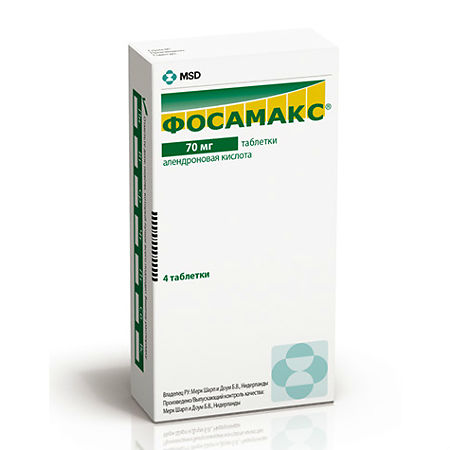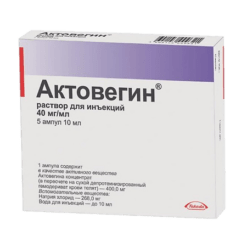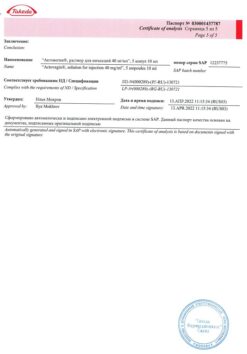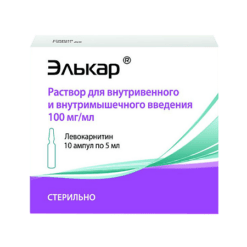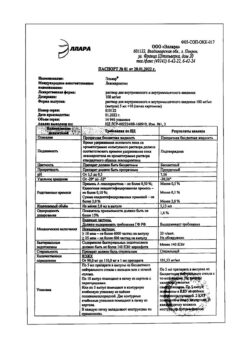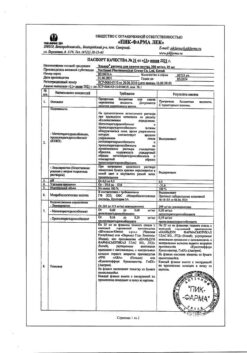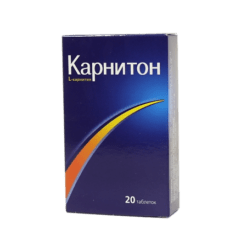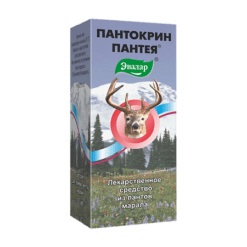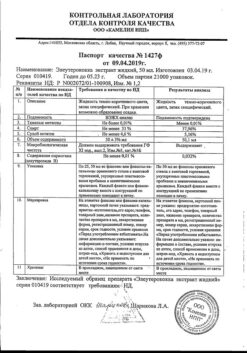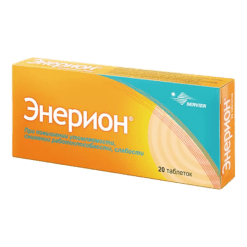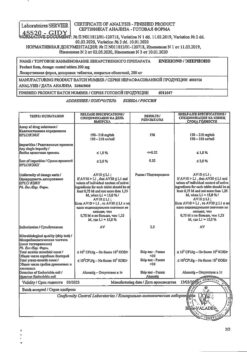No products in the cart.
Fosamax, tablets 70 mg 4 pcs
€14.51 €12.57
Out of stock
(E-mail when Stock is available)
Description
Bone fragility, Climax, Osteoporosis
- Treatment of osteoporosis in postmenopausal women to prevent fractures, including Fractures of the hip and vertebral compression fractures;
- Preventing osteoporosis at risk in postmenopausal women in order to reduce the likelihood of developing fractures
- Preventing osteoporosis in postmenopausal women
- treatment and prevention of glucocorticoid-induced osteoporosis in men and women
- treatment of Paget’s disease in men and women.
.
Indications
Indications
Treatment of osteoporosis in postmenopausal women to prevent the development of fractures, incl. hip fractures and spinal compression fractures;
prevention of osteoporosis if there is a risk of its development in postmenopausal women in order to reduce the likelihood of developing fractures;
treatment of osteoporosis in men to prevent fractures;
treatment and prevention of osteoporosis induced by glucocorticoids in men and women;
treatment of Paget’s disease of bone in men and women.
Pharmacological effect
Pharmacological effect
Pharmacotherapeutic group:
Special instructions
Special instructions
The patient should be informed that if symptoms of gastrointestinal tract damage appear (for example, pain when swallowing or behind the sternum, the appearance or worsening of heartburn), it is necessary to stop taking the drug and consult a doctor.
The risk of developing severe adverse reactions from the esophagus increases in patients who violate the rules for taking the drug (are in a horizontal position after taking Fosamax, drink an incomplete glass of water, continue to take Fosamax after symptoms of esophageal irritation appear). Therefore, the patient must be clearly informed about the rules for taking the drug.
Fosamax should be prescribed with caution to patients with exacerbation of diseases of the upper gastrointestinal tract (dysphagia, diseases of the esophagus, gastritis, duodenitis, ulcers) due to the possible irritant effect of Fosamax on the mucous membrane and worsening of the underlying disease.
The patient should be informed that if he accidentally misses a dose of the drug once a week, he should take 1 tablet in the morning of the next day. You should not take 2 tablets on 1 day, but subsequently you should continue to take 1 tablet on the day of the week that was chosen for administration from the very beginning of treatment.
Before starting treatment with Fosamax, you should normalize the calcium level in the blood and compensate for the lack of vitamin D.
Due to the fact that Fosamax increases bone mineral content, a slight asymptomatic decrease in serum calcium and phosphate levels may occur (including in patients receiving corticosteroids, in whom calcium absorption may be reduced).
Patients should take calcium and vitamin D supplements if their dietary intake is inadequate.
In clinical studies, no age-related differences in the efficacy or safety profile of Fosamax were observed.
In double-blind, multicenter, controlled studies, 18% and 10% of patients treated with Fosamax and 12% and 3% of patients treated with placebo experienced asymptomatic, mild, and transient decreases in serum calcium and phosphate levels. However, the incidence of calcium <8 mg/dL and phosphate <2 mg/dL was similar in both groups.
Active ingredient
Active ingredient
Alendronic acid
Composition
Composition
1 tablet contains:
Active ingredient:
alendronate sodium 91.37 mg (equivalent to 70 mg alendronic acid).
Excipients:
microcrystalline cellulose 140 mg,
lactose anhydrous 113.4 mg,
croscarmellose sodium 3.5 mg,
magnesium stearate 1.75 mg.
Pregnancy
Pregnancy
Use during pregnancy
Alendronate should not be used during pregnancy. There is insufficient data on the use of alendronate in pregnant women.
Animal studies do not indicate any immediate adverse effects during pregnancy, embryonic or fetal development, or postnatal development. Alendronate administered to rats during pregnancy caused dystocia due to hypocalcemia.
Use during breastfeeding
There are no data on the excretion of alendronate in breast milk. Alendronate should not be prescribed to women during breastfeeding.
CHILDREN
FOSAMAX® should not be used in children under 18 years of age due to insufficient data on safety and effectiveness in diseases associated with childhood osteoporosis.
Contraindications
Contraindications
Diseases of the esophagus and other factors that slow down its emptying, such as strictures or achalasia.
Inability to sit or stand upright for 30 minutes.
Hypersensitivity to alendronate or any excipient of the drug.
Hypocalcemia.
Hereditary lactase deficiency, glucose-galactose malabsorption.
Severe disorders of mineral metabolism.
Chronic renal failure (creatinine clearance (CC)) Vitamin D deficiency.
Childhood.
With caution
With exacerbation of diseases of the upper gastrointestinal tract (GIT), such as dysphagia, diseases of the esophagus, gastritis, duodenitis or gastric ulcer.
For serious gastrointestinal diseases in the previous 12 months, for example, peptic ulcers, gastrointestinal bleeding, upper gastrointestinal surgery, excluding pyloroplasty.
If you are predisposed to hypocalcemia (hypothyroidism, calcium malabsorption).
Side Effects
Side Effects
In clinical studies, the following side effects occurred with an incidence of ≥1%:
From the digestive system: abdominal pain, dyspepsia, esophageal ulcer, dysphagia, flatulence, constipation, diarrhea, sour belching, nausea, gastritis, stomach ulcer, incl. gastric ulcer complicated by bleeding (melena).
From the musculoskeletal system: myalgia, pain in bones, joints, muscle cramps.
From the side of the central nervous system: headache.
The following side effects have been reported in widespread clinical practice:
From the digestive system: erosions or ulcers of the esophagus, nausea, vomiting, gastritis, melena, esophagitis, esophageal stricture, perforation, oropharyngeal ulcer; rarely – gastric and duodenal ulcers (although a connection with the drug has not been established), local osteonecrosis of the jaw, associated mainly with previous tooth extraction and / or local infection (including osteomyelitis), often with slow recovery.
From the musculoskeletal system: myalgia, bone pain, joint pain (rarely severe), joint swelling, low-energy fractures of the femoral shaft.
Dermatological reactions: skin rash, erythema, photosensitivity, itching, alopecia; rarely – severe skin reactions, including Stevens-Johnson syndrome and toxic epidermal necrolysis.
Allergic reactions: urticaria; rarely – angioedema.
From the body as a whole: transient symptoms of an acute phase reaction at the beginning of treatment (myalgia, malaise, asthenia, less often – fever), hypocalcemia; rarely – peripheral edema.
From the senses: rarely – uveitis, scleritis, episcleritis.
From the side of the central nervous system: dizziness, systemic dizziness, disturbance of taste.
From the laboratory parameters: a decrease in the level of calcium and phosphate in the blood serum (usually mild, asymptomatic and transient) by 18% and 10%, respectively.
Fosamax is generally well tolerated, side effects are usually mild and do not require discontinuation of the drug.
Interaction
Interaction
The absorption of alendronate may be impaired if the drug is taken concomitantly with water, drinks (including mineral water), calcium supplements, antacids and other oral medications. In this regard, the interval between taking FOSAMAX® and other medications taken orally should be at least 30 minutes.
No other clinically significant drug interactions are expected. In clinical studies, some patients received estrogen (intravaginal, transdermal, or oral) while taking alendronate. No adverse events associated with their simultaneous use were identified.
Since the use of nonsteroidal anti-inflammatory drugs (NSAIDs) is associated with the development of erosive and ulcerative lesions of the gastrointestinal tract, caution should be exercised when using NSAIDs and alendronate simultaneously.
Although specific interaction studies have not been conducted, in clinical studies alendronate was used concomitantly with a wide range of commonly prescribed medications without evidence of clinical adverse interactions.
Overdose
Overdose
Symptoms: hypocalcemia, hypophosphatemia, adverse events from the upper gastrointestinal tract, incl. dipepsia, heartburn, esophagitis, gastritis, stomach and esophageal ulcers.
Treatment: The patient should take milk or antacids to bind the alendronate. To prevent esophageal irritation, do not induce vomiting. Patients should remain upright. There are no data on specific therapy.
Storage conditions
Storage conditions
At 15–30 °C
Shelf life
Shelf life
2 years
Manufacturer
Manufacturer
Merck Sharp and Dome B.V., The Netherlands
Additional information
| Shelf life | 2 years |
|---|---|
| Conditions of storage | At 15-30 °C |
| Manufacturer | Merck Sharp & Doum B.V., The Netherlands |
| Medication form | pills |
| Brand | Merck Sharp & Doum B.V. |
Related products
Buy Fosamax, tablets 70 mg 4 pcs with delivery to USA, UK, Europe and over 120 other countries.

